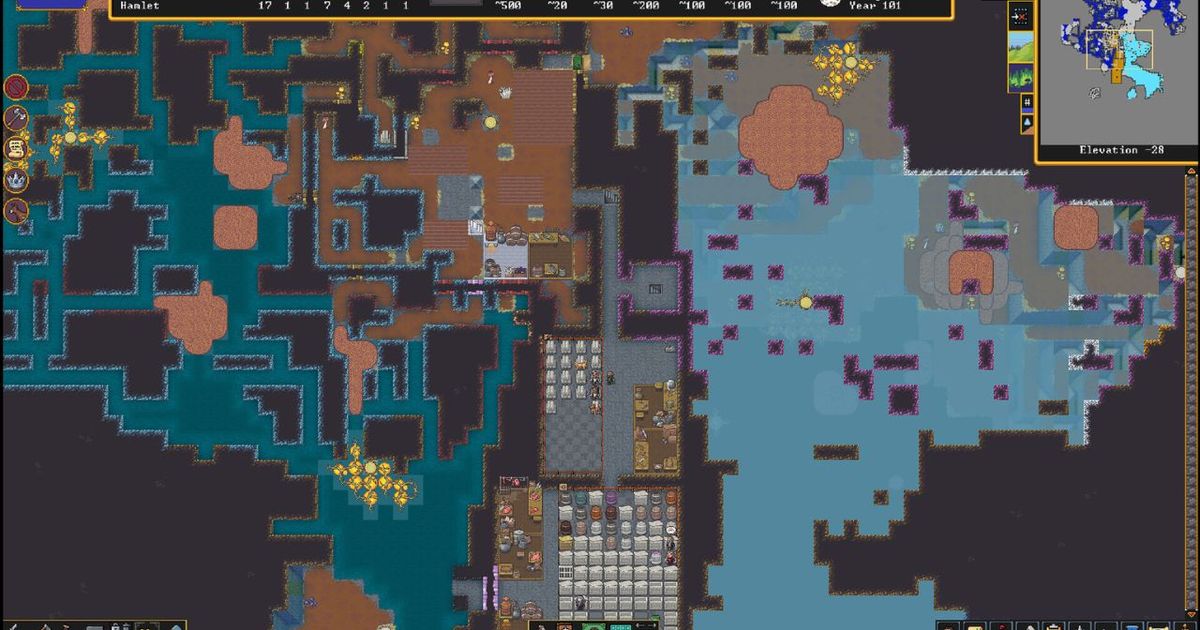Undoubtedly, Dwarf Fortress water is one of the most critical resources in the game. Though it takes many forms, learning how to properly harness the wet stuff can dramatically alter your fortress-managing experience. Read on to work out its little intricacies like how to farm it in winter, and even how to get rid of it when there's just too much.
Water from the oceans and rivers is the primary source of life in Dwarf Fortress. Home for many aquatic creatures you can learn to harvest and harness over time, it's important to understand the basics of the essential liquid before you start to manipulate it. A reckless move can level your game.
And while you are here, make sure to check our Dwarf Fortress beginner's guide. Also, feel free to check our list of the best strategy games for Android.
Dwarf Fortress water types - Clean, fresh, and salt water
Like in real life, water in Dwarf Fortress exists in three forms. The two main water shapes are freshwater and saltwater. In the later stages of the game, Freshwater is what you'll want to harvest. It's a valuable resource.
Freshwater fills all inland areas, while saltwater can be foud inside the seas or oceans. Mud, created when water comes into contact with the ground, can be used for plating seeds.
Dwarf Fortress water depth levels and effect
Level | Description |
|---|---|
0 | There is no water on level zero. |
1 | Water can evaporate, but without the effect on jobs. |
2 | Knee height water level. From depth two, water has a significant impact on the gameplay. |
3 | Waist height level that will lead to suffocating in water creatures. |
4 | On depth four and further, water is dangerous. It disables you from using a train and can form an ice wall if frozen. |
5 | Head height water level. |
6 | Dwarf’s head height water level. |
7 | Level seven can flood the entire map. Buildings will stop being a barrier, and water will be able to demolish the entire city. |
One more important characteristic of water in Dwarf Fortress is depth. The game provides eight unique depth levels, from zero to seven. And in the table below, you can find more information about every water level.
How freezing and evaporating water works in Dwarf Fortress
Like in real life, water can freeze and evaporate at specific temperatures. Water starts evaporating only when it’s on the first depth level and the temperature is higher than 10015 U.
Once the temperature hits below 10000 U, water starts to freeze, turning into ice. If the body of water is deeper than level four, ice walls will begin to form.
Dwarf Fortress water sources
Now that you know general water science and safety, it's time to discover the sources of water. Rivers, oceans, lakes, and some brooks provide that important Dwarf Fortress water.
Even though these sources might become frozen during the winter and in naturally colder biomes, they'll melt if things warm up again, so keep tabs on nearby sources. Just because it's not a risk right when you find it, that doesn't mean it won't ever be.
And that concludes this relatively brief look at Dwarf Fortress water mechanics. We'll add more specific parts over time, but this is a good overview for beginners before things like aquifiers, stores, and drains come into play. For more context, make sure to check our Dwarf Fortress review that compares the finishes product to its decades-old predecessor.
Explore new topics and discover content that's right for you!






